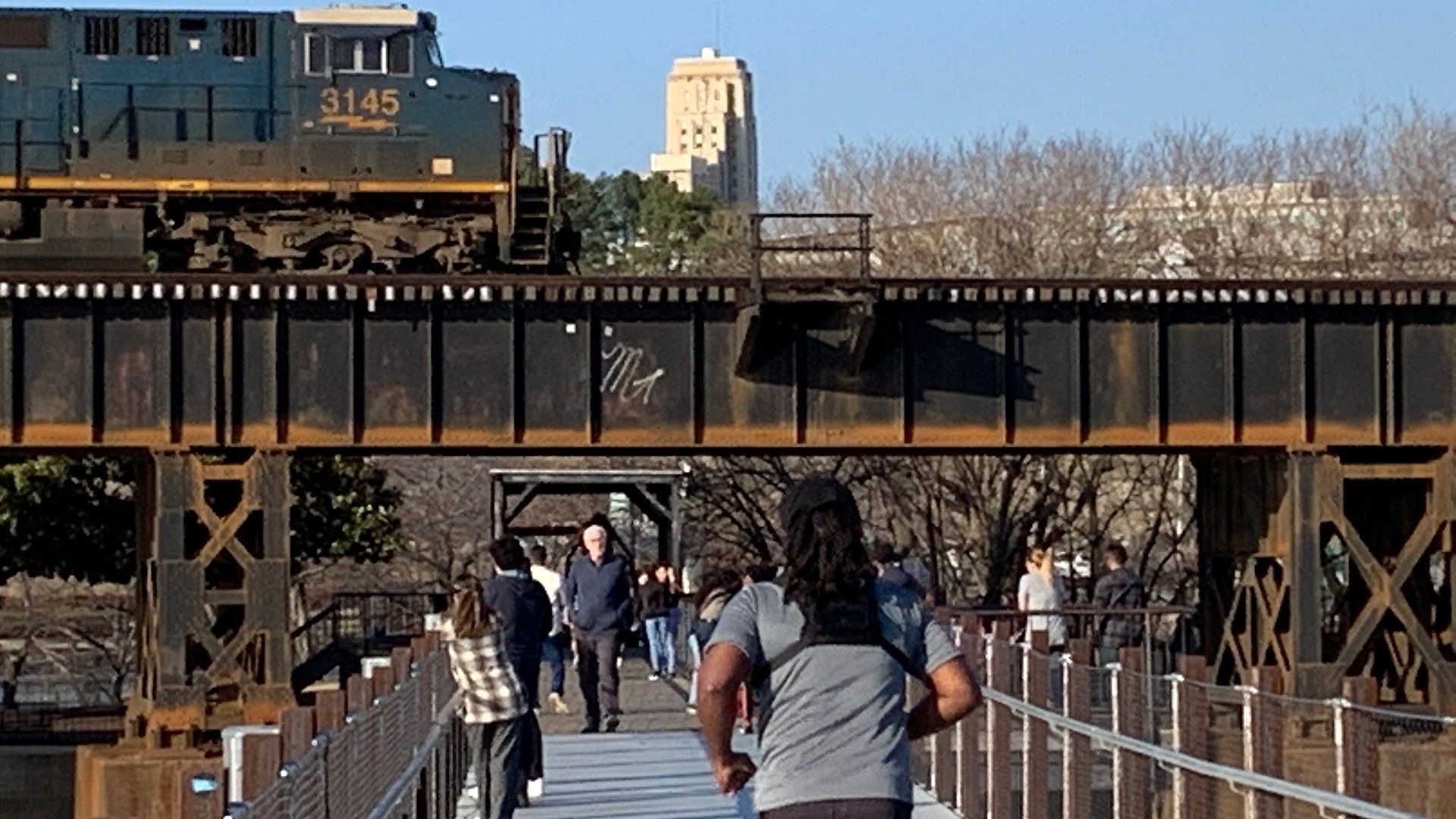Questions? We’ve got answers.
The Fall Line is a 43-mile continuous trail that will run from Ashland to Petersburg and will connect seven central Virginia localities.
Planning for the Fall Line officially started in 2019, with a few unofficial years before that. Excluding the .6-mile section is Ashland that started as a separate, earlier project, ground officially broke on the Fall Line in late 2023. The projected date for the completed trail is sometime between 2029 and 2031. However, large sections are expected to be completed sooner, such as 13 contiguous miles from Richmond to Ashland in 2026.
The Fall Line name reflects the corridor’s unique topography that parallels the geological fall line, a consistent drop in elevation that separates the flat coastal plain and the hillier piedmont region that runs the length of the east coast of the US. The fall line is the cause of the rocks and rapids in the James River that limited westward expansion by boat for early European settlers and is the reason why Richmond is located where it is. You can read more about it here >
Perhaps the most defining characteristic of the Fall Line is that it is routed specifically to connect existing urban and developed areas. Unlike many trails that are built in rural, easy corridors, the Fall Line is an investment in connecting people to destinations as a backbone for active transportation networks, a bit like how an interstate serves as a spine for a local road network. The Fall Line will connect more than a third of a million people in Central Virginia who live within two miles of the trail. This alone elevates the future impact of the Fall Line to national significance.
Furthermore, the Fall Line is fortunate to have earned a significant portion of its planning and construction funds early in the project’s development. This has allowed for the development of the trail to proceed faster and smoother than many peer trail projects, despite the more intensive construction process. This stems in part from a decade of extremely high rates of organizational and citizen-level advocacy engagement in the Richmond region. Everybody seems to want the Fall Line as fast as possible!
Sports Backers’ Fall Line Vision Plan was strategically developed with extensive stakeholder input to build regional collaboration, inspiration, and coordination on where and how trailheads and amenities are developed. Locality partners still have a lot of autonomy on how they will implement trail services and features, but the Vision Plan has helped to develop unprecedented partnership among our region’s administrators.
As amenities are installed, our interactive maps will be updated. For now, the Vision Plan shows conceptual locations for them.
Maintenance and programming agreements are still being developed by trail administration partners. As of early 2024, VDOT has committed to maintaining the paved sections of trail. Other maintenance such as vegetation control and collecting trash will be administered by individual localities. Establishing an organization to oversee and program the trail is still in development under the coordination of the CVTA.
ORIGINS OF THE FALL LINE
Named for its unique geography along the trail corridor, the “fall line” denotes the area where the Piedmont plateau and Atlantic Coastal Plain meet, resulting in a number of rapids and waterfalls.
